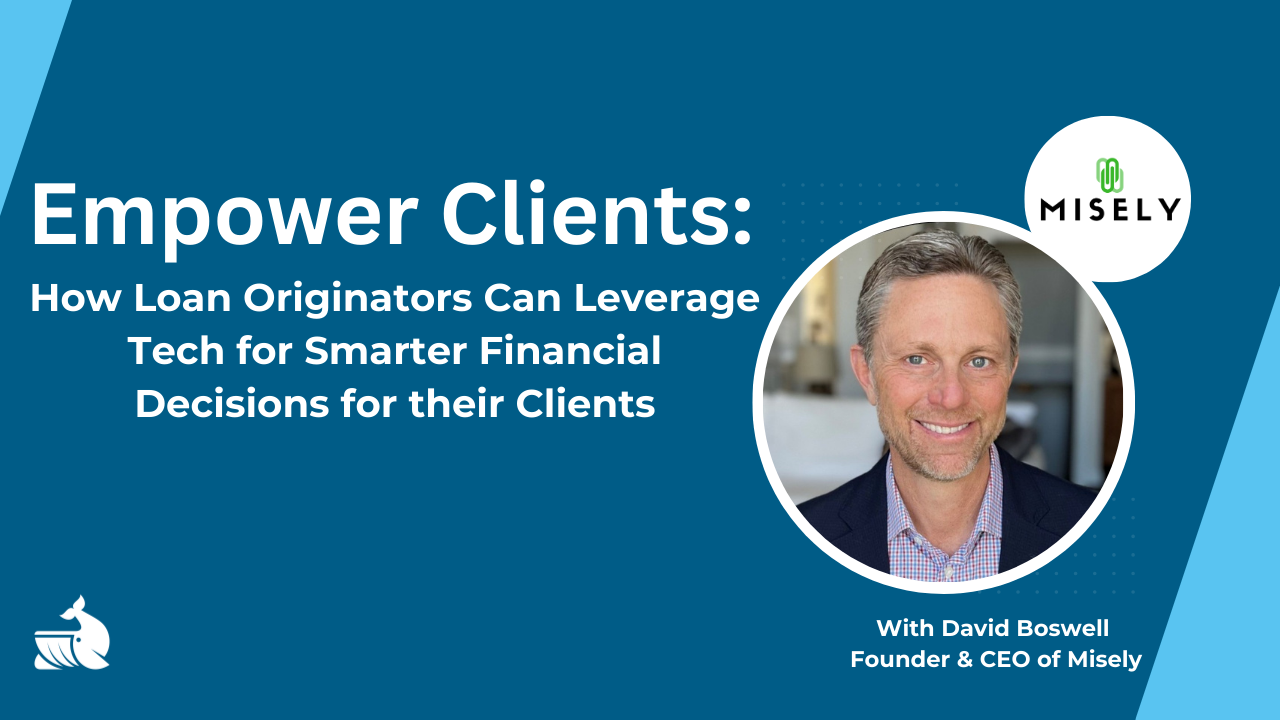Treasure In Your Database: How Lenders Can Find Loans In Their Database
There are these Instagram accounts of treasure hunters with metal detectors and gadgets that help them find mysteriously hidden treasure in all kinds...
4 min read
William LeBaron : May 23, 2023 12:00:00 AM

One of the biggest misconceptions in the mortgage industry is the belief that our customers are mostly coming back to us for their next loan. It’s a blind spot that nobody is talking about.
False Belief: There isn’t that much opportunity in my database. Nobody is doing loans right now, my past customers are happy where they are, and if they need me, they will call... right?
Before we dive in, let us ask this: who is the best person to help your past clients with their next mortgage?
The Answer: YOU!
Why? Simple, you know them, their situation, their past experiences, their struggles, their aspirations. You have their best interest at heart, and have a track record to prove that.
But, it’s shocking to learn that only 1 in 5 past mortgage clients return to their previous LO for their next loan.
19% actually – Only 1 in 5.
Client Case Study: Calculating the Cost of Lost Opportunity
It was a few years into our Journey when we got a call from one of our biggest clients at the time.
The client had competitive rates, programs, and services. On paper, they were doing everything right but they were only recapturing a portion of the thousands of credit alerts they were receiving.
They had 300,000 past clients being monitored, and while the credit alerts were winning hundreds of deals every month, they were still losing more than they kept, and without finding a solution, the client would continue to lose millions in servicing and thousands of origination opportunities every single month.
The client’s initial viewpoint recognized there was a problem, but not until they started getting an alert every time they had a client leaving them, and they were coming in by the hundreds daily, did they see just how big it was. The information learned in the first phase of monitoring demonstrated just how much was being lost and how much there was to gain.
So the basic math for them was this:
From the 300,000 past customers in their database, the average person was buying a new home every 10-11 years.
This meant 9-10% bought and sold each year. (For them the numbers were insane) But for someone with a 1,000-contact database, that’s 8-9 purchases happening every month, month after month in their own database of relationships and contacts. (The purchase activity is the same in 2023 as it was when we did this measurement)
But that wasn’t all that we discovered here.
We found that the average person also refinanced twice in that same 10-11 year window, so that’s 2 refis in that 10-year window, which meant another 9-10% refinanced every year.
The math on that is astounding: for that client, there were 54,000 loans, 27,000 purchases and 27,000 refinances, per year already happening. They just had to start intercepting.
Originator Case Study: Sleeping on a Gold Mine
For the average Origiator, 300,000 people is just not a reasonable amount of data, but with just 1,000 contacts (Customers, leads, prospects, phone contacts, email contacts, CRM contacts), you can expect the following:
Month, after month. Even in years where refis are slow, the purchase activity stays steady.
So for this client, we developed a plan and a strategy that turned one of the biggest losses into a core strength still driving a considerable portion of that client’s business.
This analysis fundamentally changed the way both the client and I looked at databases, and we both knew we needed a way to predict BEFORE someone was in the market
Thus, Predictive Monitoring was created out of this need to catch people BEFORE they were leaving.
Retention Im Possible: The Long Term Strategy
First, a predictive model isn’t designed to say “Hey, these are the people that are likely to be in the market for your company’s special loan program, rates, DPA, or other offers.
Instead, it’s about capturing existing intent. It’s designed to find people who will be entering the market soon.
We are not trying to talk someone into something new that they aren’t interested in. We are looking for ONE thing: How likely is this person to be in the market with one of your competitors in the next 90 days?
We found 3 key areas that matter, and we have to look at all three to accurately start predicting:
As soon as we identify that someone is more than 10% likely to start a loan with a competitor in the next 90 days, we alert you of that, along with a recommended product match – like debt consolidation, home seller, homebuyer, etc.
We can see anytime one of our predictive alerts ends up starting a loan, so we can always see how well the predictions are meeting benchmarks, allowing us to adapt the model constantly to market conditions.
Predictive analytics helped us achieve client goals, capturing even more of the runoff business without having to adopt huge new costs or implement large and failure-prone initiatives.
There is an old Hockey quote: “Skate where the puck is going, not where it has been.”
In our time working with clients, we’ve maintained a different viewpoint, focusing on intercepting business that is already happening rather than spending time and energy trying to find and meet new people – and then trying to talk those people into changing what they are doing and come get a mortgage.
If there is someone who knows and trusts you, who is in need or going to be in need of your services soon, that’s the easiest, cheapest, most efficient way you will ever find to get loans.
But before you can begin capturing that opportunity, you have to first open your eyes to the opportunity that is silently slipping away every day. It means breaking the status quo that assumes industry tech is effectively solving the issue.
Before you can solve a problem, you must first admit that there is a problem, and that is the first step in solving relationship retention.
That’s the first step in making repeat business a core strength instead of a business weakness.
To learn more about this strategy, register for our webinar on June 1st, 2023: (Or watch the recording)
https://us06web.zoom.us/webinar/register/WN_bvrPJqSpTCGSXVP4keJvig

There are these Instagram accounts of treasure hunters with metal detectors and gadgets that help them find mysteriously hidden treasure in all kinds...

David Boswell, Founder and CEO of Misely, joins MonitorBase's William LeBaron to discuss the importance of helping clients make informed financial...

AI can drive your car.. do your homework, but how are mortgage originators and realtors utilizing AI? Artificial Intelligence (AI) is changing the...